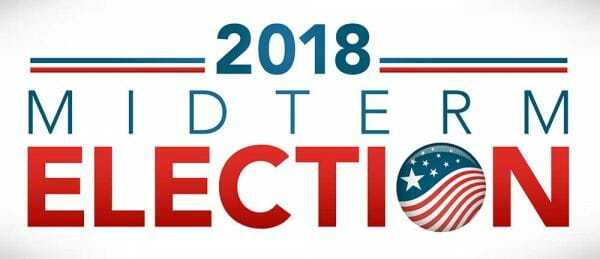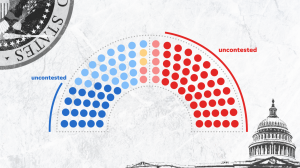
Maggie McCann, Contributing Writer|
Tuesday, November 6, eligible voters from across the country gathered at their nearest polling location to exercise their right to vote. The questions are now what the results mean, who holds the most power, and what can be expected for the future of American politics.
The midterm elections are done halfway through a president’s term; the 435 seats in the House of Representatives are up for re-election, as well as 1/3 of the senate. Thirty-four of the 100 seats in the United States Senate were voted upon on November 6, along with 36 of the 50 states holding governor elections for a four-year term.

Starting with the House of Representatives, the results, as reported by The Associated Press, are as follows: 225 seats (51.7 percent) of the House are Democratic, and 197 seats (45.3 percent) of the House are Republican, a victory for the democratic party. As for the Senate, 51 Senate seats are Republican, 44 Senate seats are Democratic, and 2 Senate seats are other parties. Republicans currently dominate the Senate population after the November 6 election.
Additionally, there are the elected state governors whose positions were voted on Tuesday. In an article by CNN discussing the results of the 2018 midterm elections, CNN summarized the governorship elections: “Democrats have picked up seven governors’ seats, giving them control of 23 governorships while Republicans control 26. There is still one race that has not been decided, and another race where an automatic recount could still occur.” Georgia’s governorship election remains undecided between their two candidates: Brian Kemp, former Secretary of State of Georgia, and Stacey Abrams, leader of the Georgia House of Representatives. Florida was expecting a recount due to close margins in results between U.S. Representative Ron DeSantis and Mayor of Tallahassee Andrew Gillum.
With Democrats winning the House, they’re granted the powers they lost during the 2016 Presidential election when Republicans held most government positions. In an article by CNN on the Democratic victory, they reported, “Under a Democratic-controlled House, Democrats will have more authority and fewer constraints on their ability to exercise oversight of the Trump administration and could launch investigations into the President’s finances … as well as ramp up a probe into the possibility that the Trump campaign colluded with the Russian government to win the White House, which Trump has denied.” It is the hope that a Democratic House will bring attention to the issues of the presidency which remained unaddressed under a Republican dominated house. This shift could bring significant change to the U.S Government.
Regarding the Republican’s Senate majority, the expectation is that many Senate representatives will work in favor of the executive branch and make a Democratic change from the House more difficult to enact. The Senate holds much more power than The House of Representatives, and this could pose an issue for House Democrats looking to make a change. The Senate isn’t entirely Republican; however, there aren’t many who are Democrats.
Leave a Reply